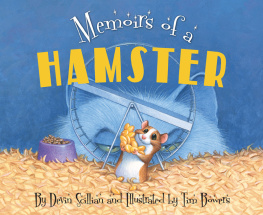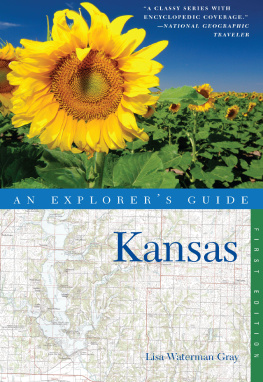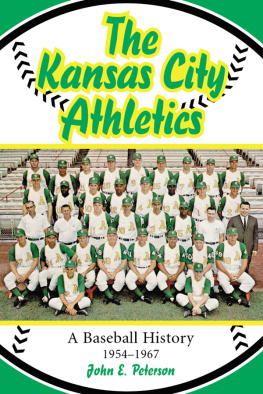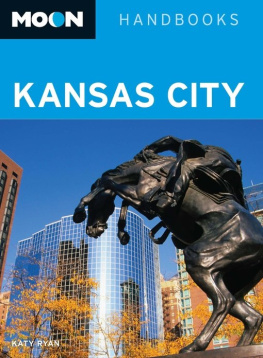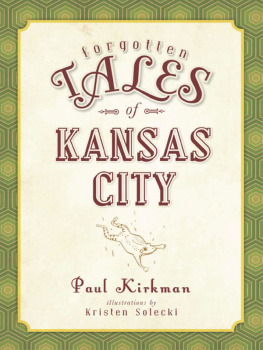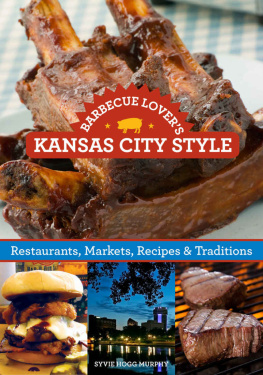One Kansas Farmer
A Kansas Number Book
Following the success of S is for Sunflower: A Kansas Alphabet, once again authors Devin and Corey Scillian are paired with Kansas illustrator Doug Bowles in another rousing state tribute. Using numbers as its backdrop, One Kansas Farmer: A Kansas Number Book gives an entertaining and educational travelogue of the states history, geography, famous people, and places.
Numbers set the stage as beginning readers enjoy the lively rhymes while older children discover facts about each number topic in the sidebar expository.
Ive lifted up a log. Come and take a gander.
20 black and yellow barred tiger salamanders!
With his bright and shiny colors, he has a sense of style.
As a proud Kansas symbol, he even seems to smile.
From its dancing prairie chickens to the invention of the microchip to the stunning Keeper of the Plains, Kansas comes alive on the pages of this book.
One Kansas Farmer
A Kansas Number Book

Written by Devin & Corey Scillian and Illustrated by Doug Bowles

To Russell and Selma Brown, who have given fertile soil
and fertile young minds such loving care.
DEVIN & COREY
To my family, to my friends at Sleeping Bear Press,
and to all the teachers and librarians of Kansas,
who make every book special.
DOUG
1
One Kansas Farmer feeds more than 128 people plus you. You might have seen this sign while riding down the highway. In 1978 the Kansas Agri-Women started a project to help promote the different agricultural industries in the state. The original sign said One Kansas Farmer feeds 55 people plus you. But as farming techniques changed so did the number.
The last changes were made to the sign in 1999. Today the number might be even higher, and that can mean different things. Farmers are capable of producing larger crops with fewer people, but it also means that many of our rural communities are getting smaller.
Kansas farmer in a field of amber grain.
Looking after cattle, he checks the sky for rain.
You have a piece of bread; you have a slice of meat.
One Kansas farmer grows a lot of what you eat.

2
Home on the Range is the state song of Kansas. It contains one of the most famous melodies in the history of American music. But the story behind the song was a mystery for decades. By 1934 it was widely played on the radio and had become a popular tune all over the country. Soon a dispute developed over the songs origins. Several people claimed that they had written the song. But an investigation found that Home on the Range was written by Dr. Brewster Higley and Dan Kelley near Smith Center, Kansas in 1872 or 1873. In 1947 it became our state song.
Oh, give me a home where the buffalo roam, Where the deer and the antelope play.
Where seldom is heard a discouraging word, And the skies are not cloudy all day.
Home, home on the range, Where the deer and the antelope play.
Where seldom is heard a discouraging word, And the skies are not cloudy all day.
songwriters wrote a little ditty.
Folks sang it in Pratt, and out in Dodge City.
A prairie waltz became our song, sung to this very day.
Sing about our Kansas home where the deer and antelope play.

3
Walter Percy Chrysler was born in Wamego, Kansas in 1875. He moved with his family to Ellis, and after graduating from high school became a machine shop apprentice for the Union Pacific Railroad. At age 35 he bought his first carand immediately took it apart so he could see what made it work. He left the train yards to work for Buick Motor Company where he was in charge of improving the way cars were built. Did he ever; Buick went from building 45 cars a day to 600. On June 6, 1925, Walter P. Chrysler started his own company, Chrysler, which would eventually grow to be the third largest carmaker in the world.
shiny cars sparkle and gleam.
Each one began as a Kansas boys dream.
Walter Chrysler found world acclaim in the Chrysler cars that bear his name.

4
Ad astra per aspera are the Latin words for to the stars through difficulties. Kansas officially adopted this phrase as its state motto in 1861. It was introduced by John J. Ingalls in the early and difficult years of Kansas statehood. Not only were the first Kansas settlers struggling with challenging environmental conditions, they were trying to become a state in the midst of the Civil War. Ingalls was serving as the secretary of the state senate and was drawing up a plan for the Kansas State Seal. He had seen ad astra per aspera on an old brass emblem in Massachusetts and thought it fit the Kansas struggles perfectly. Even though his original sketch for the seal was not used, his motto was kept, and it flies on every Kansas flag today. Ad Aspera is the name given to the statue of a Kansa warrior that stands atop the capitol dome in Topeka.
Latin words to guide us each day, the Kansas state motto shows us the way.
Ad astra per aspera begs us to fly toward the faraway stars in the Kansas sky.

5
The fertile Kansas plains are fed by five major river systems: the Kansas-Smoky Hill-Republican, the Missouri, the Cimarron, the Marais des Cygnes, and the Arkansas. These feed into 50,000 named rivers and streams.
Long before Kansas became a state, Native Americans and, later, French fur traders were traveling along the Kansas River. Settlers who came to Kansas to work the land knew that a river or stream could mean water to drink, water for crops, and water for cattle and horses. For that reason, the earliest farms, towns, and cities sprang up along the Kansas waterways.
Among Kansans, the Kansas River is also known as the Kaw.
We need to count to and our state delivers the life-giving water of five Kansas rivers.
Our rivers and streams have to flow, for theres cattle to raise and wheat to grow.

6
Before Kansas ever became a state, six different nations laid claim to either part or all of its territory. Spain, the United Kingdom, the French Monarchy, the French Republic, Mexico, and the Republic of Texas had all tried to call Kansas their own. This doesnt include the Native Americans who lived here and called it home for centuries. Six flags stand in the Kansas capitol in the second floor rotunda as a reminder of this long history.
I look to the sky and flags appear, One for each nation that once governed here.


